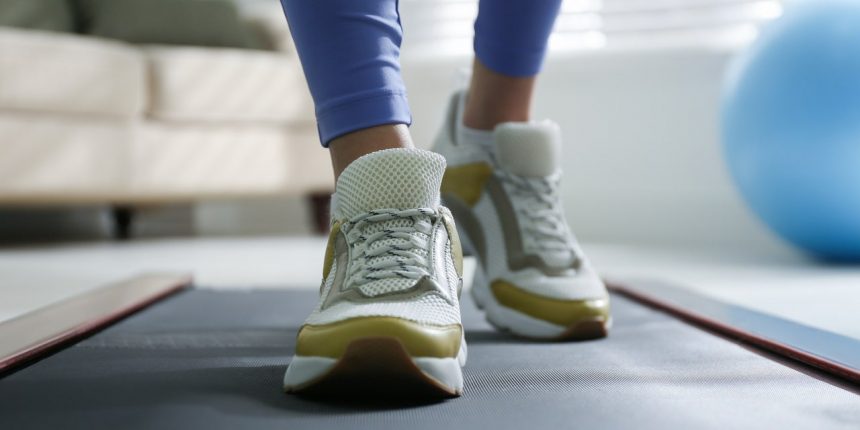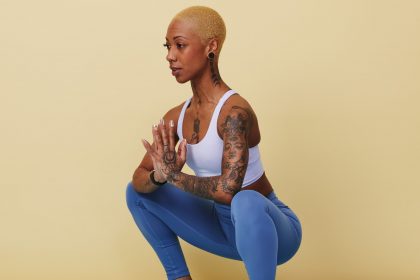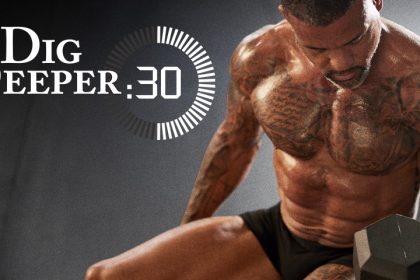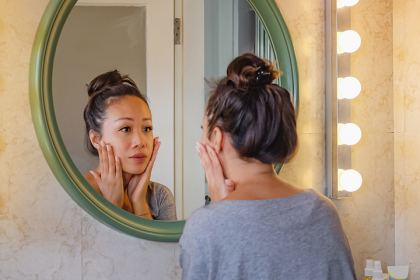The explosion of work-from-home life has given many of us new habits. We take video calls from our couch, do laundry at lunchtime, and redecorate our living rooms to become our office space. One shiny new product that’s been finding a home there? A walking pad.
This piece of equipment—one of the “better trends” that burst into the fitness space over the past few years—allows folks to reap the benefits of adding steps to their day without having to do an intense workout (or go to the gym) to get it done, Kelly Bernadyn, CPT, a Michigan-based group fitness instructor at Life Time clubs, tells SELF.
Still, ambling along at a leisurely pace while you multitask is a lot different from doing a dedicated workout. But can it be just as good? Here’s what you need to know.
Walking pads don’t offer the power of treadmills, but they do make it easy to add some movement to your day.
A walking pad looks a little like a small treadmill, minus the handlebars (so you can easily slide it under a standing desk). But since they’re designed specifically for walking, these machines typically have lower max speeds and shorter belts than treadmills, and little-to-no incline capabilities.
“I think the best thing about it is how simple it is to use,” Rick Richey, CPT, a personal trainer and faculty instructor for the National Academy of Sports Medicine, tells SELF. “The benefit of getting on a walking pad just for walking is that it doesn’t require a warm-up or a cooldown.” All you have to do is hop on, set your desired speed, and rack up the many benefits of taking extra steps.
As SELF reported previously, walking brings a whole bunch of perks, from reduced back pain to improved mood. And you don’t necessarily need to stroll for a sustained amount of time to make it worth it. According to a 2023 study published in Medicine & Science in Sports & Exercise, walking for five minutes every half hour can lower both blood sugar and blood pressure, which can help offset the detrimental health effects of a typical sedentary desk job. But it’s not always realistic to take quite that many breaks during the day, which means a walking pad—which allows you to sneak in a little gentle activity without ever leaving your laptop—might just come in clutch.
Even if you’re only walking a mile an hour, you can get your blood flowing and joints moving. It might even boost your mood (and perk you up) when you hit that afternoon slump, Bernadyn says.
Just keep your expectations realistic. “If all we do is add this walking into our lifestyle, we do ourselves a disservice,” Bernadyn says. That’s because our bodies need a variety of movements and intensities to really create a well-rounded fitness routine. Walking slowly at your desk won’t build muscle the way you could through strength training—which packs its own perks, including better balance and bone density—or improve your heart and lung function as much as you would with moderate- or high-intensity cardio.
So how can you get a workout with a walking pad?
A walking pad is mainly designed to steadily boost your step count while you’re doing something else—so that’s generally going to be the best way to use it. But that doesn’t mean you can’t get creative and turn it into a bit more of a workout by making a few adjustments.
Before you crank up the belt, though, make sure you’re stable—remember, there are no handlebars to hold onto (so if you have balance issues, you might want to stick to a treadmill that has these). “If it hurts or makes you uncomfortable, stop,” Richey says. “There is no sense in getting hurt trying to get fitter and healthier.”
1. Increase the speed.
If you want to get your heart beating faster, the simplest option is to pick up the pace. A 2022 review in Frontiers in Public Health concluded that brisk walking can improve both cardio fitness and muscular strength (to an extent—not as much as you’d get with a dedicated strength program, of course). And high intensity is even better than moderate when it comes to improving your aerobic capacity, or how efficiently your body can use oxygen so that you can keep taking step after step.
Many walking pads go up to about four miles per hour, or a 15-minute mile pace, so you likely won’t be running, but it will take some effort. If things get to be too much, you can always pull back—or work in some recovery periods at lower effort to get a breather.
2. Try intervals.
Intervals are an efficient way to make the most of a walking pad. “You can get the same amount of work done in a shorter amount of time,” Richey says. However, he suggests getting used to steady-paced walks first so you know how the equipment feels and functions before you fiddle with the speed.
After you do, Bernadyn says you can try alternating two minutes at a challenging effort with a minute of recovery or easy effort, where you can catch your breath, sticking with this pattern for about 20 to 30 minutes total. (Just know that if you’re very fit, a walking pad might not go fast enough to really hit a super high heart rate.)
3. Turn to the side for some lateral movement.
Consider switching directions sometimes for side-to-side lateral walks. “It helps to work the lateral muscles and the medial muscles to help you balance and stabilize better,” Richey says. In particular, you’ll feel the gluteus medius and gluteus minimus on the side of your butt—two muscles that all too often go ignored since we don’t move sideways often in our day-to-day life when we’re just walking forward.
You’ll want to get on the walking pad facing forward like you normally would (to stay safe), set it to a slow pace, then turn to the side once you feel comfortable—and don’t forget to switch which way you’re facing. Bernadyn suggests shooting for just 30 to 60 seconds per side at a time, adding that you can use these short sidestepping intervals whenever you feel the need to break up the monotony of straightforward walking.
4. Do high knee marches.
Looking to work your core? Bernadyn recommends turning down the speed to 0.3 or 0.5 miles per hour, and doing some high knee marches. “Go at a slow enough pace that you’re able to drive your knee up to 90 degrees, flexing the quad, and then take that full step down without feeling like you’re going to fall off the back of your walking pad,” she says. Your core will automatically fire up to keep you balanced as you go.
Just don’t try to push the pace. “We’re going really slow here,” Bernadyn says. “We’re not focused on speed. We’re focused on form and safety.”
5. Amp up the incline (if you can).
Not all walking pads have an option to change the incline. But if yours does, take advantage. “Incline work is going to help strengthen the backside of your body—your hamstrings, your glutes, your calves,” Bernadyn says. It will also get your heart beating faster. She suggests beginners aim for a 3- to 5% grade. “As long as you feel comfortable and you’re not searching for handrails, you’re probably in a good spot,” she says.
So, are walking pads worth the hype?
Although there are some ways to vary your workouts on these machines to keep things interesting, don’t feel like you have to “amp it up.” Generally, walking pads are meant to just add a little more movement to your day. “It’s not designed to be effortful. It’s designed to be active,” Richey says. “And honestly, that’s what we could all use a little bit more of as a society.”
So consider your walking pad more of a step break versus an actual workout. In that vein, the most effective way to use them is generally going to be what they’re designed for: slow, gentle steps. “Walking is likely the best thing to do on this piece of equipment and a great exercise to incorporate more into most people’s daily lives,” Richey says.
A walking pad is unlikely to completely transform your fitness. But it’s still a healthy choice to counteract the effects of a job that would otherwise have you stuck in a chair for hours at a time. Richey’s top advice for getting the most out of this fitness tool? “Keep it simple and keep consistent.”
Related:







